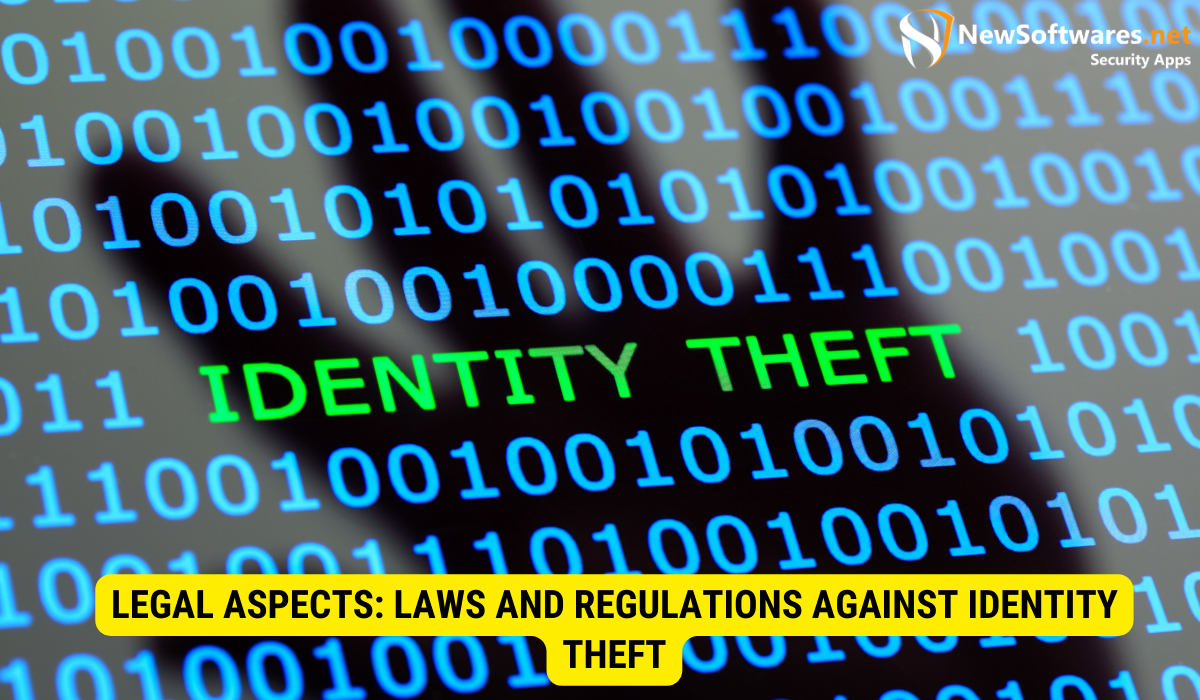Identity thieves can access social security benefits by exploiting personal data like social security numbers, names, and addresses. This can lead to significant emotional and financial consequences for victims, as well as broader societal implications. Prevention strategies include using strong passwords, regular monitoring of accounts, and government efforts to bolster cybersecurity.
Identity theft poses an important risk to individuals, and one of the areas where it can have devastating consequences is in accessing social security benefits. Together, we will explore the various aspects of identity theft related to social security benefits, including what constitutes personal data, how identity thieves gain access to these benefits, the impact on victims and society, prevention strategies, and the legal aspects surrounding identity theft. It is crucial to recognize the complicated risks and take proactive steps to protect personal information to mitigate these threats.
Understanding Identity Theft: A Brief Overview

Identity theft is a pervasive and ever-evolving misconduct that involves the fraudulent acquisition and use of someone’s personal information, typically for economic gain. The stolen data can comprise social security numbers, names, birth dates, addresses, and financial details. However, the scope of personal data extends beyond just financial information.
Identity thieves exploit this information to impersonate individuals and gain access to their benefits, such as social security. They can wreak havoc on a person’s financial well-being, tarnish their reputation, and cause immense emotional distress.
It is essential to recognize that personal data encompasses more than just the obvious financial information. It also includes information typically used to verify identity, such as usernames, passwords, answers to security questions, and even biometric data like fingerprints. This wide range of personal data makes individuals vulnerable to various forms of identity theft.
What Constitutes Personal Data?
Personal data encompasses any information that can identify an individual. This includes social security numbers, full names, addresses, phone numbers, email addresses, financial account details, medical records, and more. Essentially, any information that can uniquely identify a person is considered personal data and must be protected.
Moreover, with the rise of social media and the digital age, individuals unknowingly share a significant amount of personal data online. This includes details about their daily activities, interests, relationships, and even their location. Identity thieves can exploit this wealth of information to piece together a comprehensive profile of their victims, making it easier to carry out their nefarious activities.
The Role of Social Security Benefits in Identity Theft
Identity thieves specifically target social security benefits due to the significant financial value involved. Social security benefits are crucial for retirees, disabled individuals, and other eligible recipients, making them an attractive target for fraudsters. By gaining access to someone’s social security benefits, identity thieves can exploit these funds for their gain.
Furthermore, the consequences of social security identity theft extend far beyond financial loss. Victims may find themselves facing challenges in accessing their rightful benefits, as their identities have been compromised. This can lead to lengthy and exhausting battles with government agencies and financial institutions to rectify the situation and reclaim what is rightfully theirs.
In addition to financial and bureaucratic hurdles, victims of Social Security identity theft may also experience emotional distress and a sense of violation. The invasion of privacy and the knowledge that someone has impersonated them can leave lasting psychological scars.
In conclusion, identity theft is a complex and universal crime that can have devastating consequences for its victims. It is crucial for persons to remain vigilant in safeguarding their personal data and to take proactive actions to protect themselves from falling prey to identity thieves.
The Process: How Identity Thieves Access Social Security Benefits
Accessing social security benefits requires a systematic approach by identity thieves. They employ various techniques to obtain personal information and manipulate the system to their advantage.
But how exactly do these identity thieves carry out their nefarious activities? Let’s dive deeper into the techniques they commonly use and the role that the internet and technology play in their operations.
Techniques Used by Identity Thieves
Identity thieves often employ a wide range of methods to gather the necessary information to access social security benefits. One of the most prevalent techniques is phishing emails. These deceptive emails are designed to trick unsuspecting individuals into revealing their personal information, such as social security numbers and dates of birth. By posing as legitimate organizations or financial institutions, identity thieves can lure their victims into providing sensitive data.
Phone scams are another common tactic used by identity thieves. They may call individuals and pretend to be representatives from government agencies or financial institutions, tricking them into divulging their personal information over the phone. These scammers often use fear tactics or promises of financial rewards to manipulate their victims.
Data breaches have become increasingly frequent in recent years, exposing millions of individuals’ personal information to identity thieves. These breaches occur when hackers gain unauthorized access to databases containing sensitive data, such as social security numbers and addresses. Once in possession of this information, identity thieves can exploit it to access social security benefits.
In some cases, identity thieves resort to the physical theft of personal documents. They may steal wallets, purses, or mail containing sensitive information, giving them direct access to the necessary data to carry out their fraudulent activities.
As technology continues to advance, identity thieves have also become more sophisticated in their methods. They may employ hacking techniques to gain unauthorized access to databases or exploit vulnerabilities in computer systems. Additionally, they create fake websites that mimic legitimate ones, tricking individuals into entering their personal information unknowingly.
Social engineering tactics are another tool in the identity thief’s arsenal. By manipulating individuals through psychological means, such as building trust or exploiting emotions, identity thieves can convince their victims to willingly disclose their personal information.
The Role of the Internet and Technology
The rise of the internet and progressions in technology have greatly facilitated identity theft on an unprecedented scale. With just a few clicks, criminals can now operate globally, accessing personal information from anywhere in the world. The interconnectedness of our digital lives has made it easier for identity thieves to exploit unsuspecting individuals.
Furthermore, cybercriminals can leverage automated tools and algorithms to make the best use of their reach and increase their chances of success. These tools can scan the internet for vulnerable systems or automatically send out phishing emails to thousands of potential victims. The speed and efficiency of these automated processes allow identity thieves to cast a wide net, targeting a large number of individuals simultaneously.
Moreover, the internet provides a platform for identity thieves to exchange information, techniques, and stolen data. Online forums and marketplaces dedicated to identity theft flourish, creating a thriving underground economy. This digital ecosystem enables identity thieves to collaborate, learn from one another, and refine their tactics, making it even more challenging to combat their activities.
In conclusion, the process of accessing social security benefits for identity thieves involves a combination of various techniques, including phishing emails, phone scams, data breaches, physical theft, hacking, fake websites, and social engineering. The internet and technology play an important role in enabling and amplifying these activities, making it crucial for individuals to remain cautious and take essential precautions to protect their personal information.
The Consequences: Impact on Victims and Society
Identity theft has severe consequences for both the victims and society as a whole. It can result in significant emotional and financial distress for individuals while also imposing burdens on government agencies and financial institutions.
Emotional and Financial Toll on Victims
Victims of identity theft often experience a range of emotions, including fear, anger, and a profound loss of trust. The financial repercussions can be devastating, as stolen funds and fraudulent activities can take years to rectify. Victims may also face challenges in reclaiming their stolen identity and restoring their creditworthiness.
Broader Societal Implications
Identity theft creates a ripple effect that impacts society as a whole. It puts a strain on government agencies responsible for administering social security benefits and investigating fraud cases. Financial institutions must invest significant resources in preventing and mitigating identity theft, ultimately affecting the cost of doing business, which can be passed on to consumers.
Prevention Strategies: Safeguarding Your Personal Data
Protecting personal data should be a top priority for individuals and organizations alike. By implementing robust prevention strategies, the risk of identity theft can be significantly reduced.
Best Practices for Protecting Personal Information
Some best practices for safeguarding personal information include using strong, unique passwords for online accounts, regularly updating software & antivirus programs, being cautious when sharing personal information online, and monitoring financial statements and credit reports regularly for any doubtful activity.
The Role of Government and Institutions in Prevention
Government agencies and institutions have a critical role in preventing identity theft and protecting social security benefits. These entities must actively invest in cybersecurity measures, raising awareness and implementing stricter protocols to safeguard personal information.
Legal Aspects: Laws and Regulations Against Identity Theft

Legal frameworks are essential in combating identity theft and maintaining order in society. There are existing laws and regulations in place to address identity theft, but their effectiveness and scope can vary.
Current Laws and Their Effectiveness
Existing laws, such as the Identity Theft and Assumption Deterrence Act in the United States, aim to criminalize identity theft and provide penalties for offenders. However, the ever-evolving nature of technology and the increasing sophistication of identity thieves pose challenges to the enforcement and effectiveness of these laws.
Potential Legal Reforms to Enhance Protection
With identity theft becoming more prevalent, there is an ongoing need for legal reforms to enhance protection against these crimes. Legislative efforts can focus on bolstering cybersecurity measures, facilitating information sharing between agencies, and increasing penalties for offenders.
Key Takeaways
- Identity theft poses an important risk to individuals accessing social security benefits.
- Personal data extends beyond financial information and includes information used to verify identity.
- Identity thieves employ various techniques, including phishing and hacking, to gain access to personal information.
- The impact of identity theft extends beyond financial loss, affecting victims emotionally and imposing burdens on society.
- Prevention strategies, including robust cybersecurity practices and government involvement, can mitigate the risks.
Frequently Asked Questions
Conclusion
In an increasingly digital world, the risk of identity thieves accessing social security benefits with personal data is a growing concern. Understanding the various aspects of identity theft and implementing preventive measures are vital for individuals and institutions alike. By prioritizing the protection of personal data and advocating for stronger legal regulations, we can collectively minimize the risks posed by identity theft, thereby safeguarding social security benefits and the well-being of individuals and society at large.
